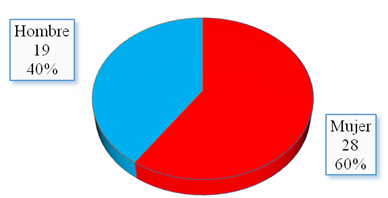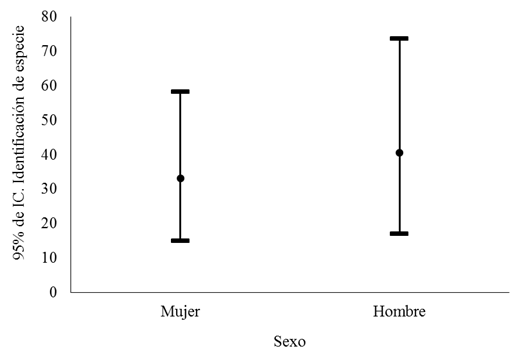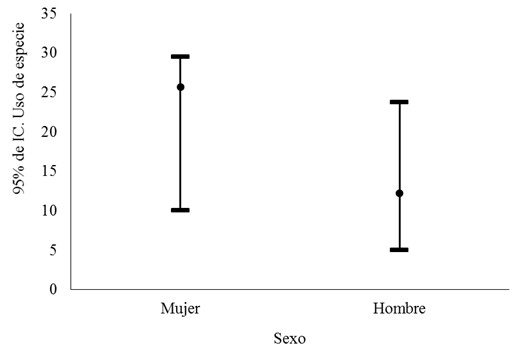My SciELO
Services on Demand
Journal
Article
Indicators
-
 Cited by SciELO
Cited by SciELO
Related links
-
 Similars in
SciELO
Similars in
SciELO
Share
Revista Cubana de Ciencias Forestales
On-line version ISSN 2310-3469
Rev cubana ciencias forestales vol.8 no.1 Pinar del Río Jan.-Apr. 2020 Epub Apr 04, 2020
Original article
Criteria affecting the identification and use of plants of interest for tourism in Jipijapa, Manabí, Ecuador
1Universidad Estatal del Sur de Manabí, Ecuador.
In order to verify the criteria that affect the identification and use of plants of interest to tourism, an ethnobotanical survey was conducted in the 10 parishes of the Jipijapa canton, Manabí, Ecuador. The initial hypothesis stated that factors such as age, gender and level of education influence the pattern of knowledge about plants. We worked with 47 residents who were knowledgeable about plants and entrepreneurs in the tourism sector, focusing on theoretical and practical knowledge, defined here as the ability to recognize plants and the ability to identify their uses, respectively. In general, the results show that the people interviewed in Jipijapa have a good knowledge of the plants, useful for tourists and this knowledge is not affected by the level of education. The criteria of age and gender influence the acquisition of practical knowledge. This study can serve as a basis for comparative studies in Ecuador.
Keywords: traditional knowledge; ethnobotanical survey; use of plants; Jipijapa; Manabí; Ecuador.
Introduction
Traditional knowledge has become a topic of interest worldwide, particularly because of its contribution to biodiversity conservation and environmental management at the local level. In relation to the tourism sector, plants and cultural knowledge about their uses can become an attraction for visitors.
Some authors have shown that the incorporation of traditional knowledge into a given tourist attraction can contribute to a strong partnership for the successful implementation of social acceptance, economic and ecological viability (Uprety et al., 2012). It is known that medicinal and aromatic plants can create business opportunities, particularly in the tourism sector (Kala, 2015). For example, the emergence of tea tourism illustrates that drinking local tea in a tourist destination can be a new experience for visitors (Jolliffe, 2007 and Cheng et al., 2012).
In Ecuador, several efforts have been made since the middle of the last century to identify and characterize terrestrial ecosystems (Sierra and Rodrigo, 1999; Josse et al., 2003; Sáenz and Onofa, 2005; Cuesta et al., 2013), focusing mainly on vegetation cover characteristics. Until recently, the classification system proposed by Sierra and Rodrigo, (1999) was the most accepted and widespread in the country. Under this system, a total of 71 plant formations were identified and described.
This megadiversity influences the way of life of the residents, fundamentally in the forms of production, food, customs, traditions and religiosity at the local level. The indigenous, Afro-Ecuadorian and Montubio peoples preserve age-old knowledge and know-how, transmitted from generation to generation, which has gone through a process of syncretism with the knowledge brought by the Spanish in the past. However, these ancestral practices are threatened by globalization and have become of little use in the face of new forms of production, so that their disuse, devaluation and acculturation has led to the adoption of customs from other cultures, endangering this biocultural wealth and memory that we possess (Valencia Vélez, 2016).
Taking into account the above problem, the objective of the research was to determine the criteria that influence the identification and use of plants of interest for tourism in Jipijapa, Manabí, Ecuador. The results allowed the selection of those plant species and their traditional uses with potential to become tourist attractions. The bases for the execution of a useful plant tourism are created based on the conservation of the plant diversity of the tropical dry forest in Jipijapa, Manabí, Ecuador.
Materials and methods
The present ethnobotanical work was carried out in the 10 parishes of the canton Jipijapa, province of Manabí, Ecuador, where three are urban (Dr. Miguel Morán Lucio, Manuel Inocencio Parrales y Guale, San Lorenzo de Jipijapa) and the rest are rural (América, El Anegado, La Unión, Julcuy, Pedro Pablo Gómez, Puerto Cayo, Membrillal). The field work was carried out between May and October 2018, through semi-structured interviews with 47 informants (28 women and 19 men) (Figure 1), who had solid traditional knowledge of plants in the area (Alexiades, 1996; Martin, 1995) and provide tourist services. The average age of the informants was 51 (minimum 18, maximum 78), 42 % had a basic level of education (Figure 2) and 68 % belonged to rural areas (Figure 3).
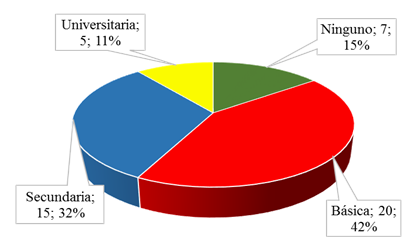
Fig. 2 - Distribution of the population interviewed by level of education in the canton of Jipijapa, Manabí, Ecuador
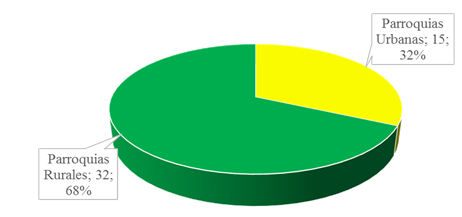
Fig. 3 - Distribution of the population interviewed by urban and rural parishes, canton Jipijapa, Manabí, Ecuador
Sample selection was not predetermined by any criteria of age, sex or occupation. Informants were selected using the snowball sampling technique, which consists of asking local people about those community members considered to be "knowledgeable" (Ghirardini et al., 2007)about the plants and who provide tourist services (accommodation, food, guides, information, transportation). The interviews were conducted individually, although in cases where the informants came from the same family, they were conducted in groups. They had an average duration of three (3) hours per informant.
To evaluate the level of ethnobotanical knowledge and use, the following variables have been used: age, sex, level of studies and occupation in the tourism sector (current or past), grouping the informants in common fields around these variables, all in relation to the number of species (species identification) and known uses (practice).
Spearman's correlations were conducted using IBM SPSS Statistics 25.0-March 2017 software to analyze the relationship between plant knowledge scores and age as an independent variable. It was also used to see if there is a relationship in respondents' scores by education level. For this purpose, the sample was divided into groups representing years of education completed: no education, basic education (up to level 9), upper secondary education (up to level 12) and higher education (university level). The ANOVA test was conducted to observe the relationship between gender and its scores on both tests (identification and use of plants by respondents).
Results and discussion
From the interviews conducted, associations between the number of recognized useful plants (theoretical) and the knowledge of the uses of the plants (practical) with age, sex and years of education were verified. Species identification scores ranged from 15 to 95 (mean=36), while use scores ranged from 5 to 37 (mean=20).
Of the total sample (47 residents), 32 respondents (68 % of the people) were over forty and 15 were under forty. Spearman's analysis showed that age is strongly correlated with plant identification (r=0.941, P=0.000) (Figure 4), while it had a weak positive relationship with respondents' use scores (r=0.3895, P=0.000) (Figure 5). These results show that age does not influence the theoretical knowledge related to the number of species mentioned, but it does influence the practical knowledge or use of the plants. They also reflect that all persons in the sample have a similar familiarity in recognizing the plants used, but the younger they are, the less knowledge they have of the uses of the species.
Older people have had more time to learn about the plants around them, and in their exchange with tourists, they have gained more knowledge and experience in the uses of plants, which may be of more interest to visitors. As far as medicinal plants are concerned, most of this knowledge is owned by elderly people who have a great reputation of knowing many plants used in the cure of various diseases and are frequently consulted by local people and tourists visiting the area, in search of herbs to cure different conditions.
The ANOVA test was carried out to observe the differences between the participants' genus and their scores for both tests (species identification and species use). The results show that, in the species identification tests, there are no differences based on genus (P=0.1339) (Figure 6); the use test scores (P = 0.000) (Figure 7) differ in the genus. Descriptive statistics (Table 1) show that, on average, women cited 13.5 more plant uses than men. Differences in knowledge between the two sexes may be due in part to differences in species preferences, as recognized by men. In the case of trees and their timber uses, men had more knowledge.
In this study, the role of gender as a factor influencing variation in ethnobotanical knowledge was not significant in the identification test, but use test scores showed significant differences between the sexes. Although men were less represented, they recognized the same plants as women, but listed fewer uses. There are several possible explanations for this. For example, it was observed that both men and women care for the garden and seem equally interested in the conservation of useful plants. However, women, as the main caretakers of the household, are the ones who take care of the beauty of their surroundings, growing ornamental plants with attractive flowers and leaves, are in charge of food preparation and handle many plants for seasoning, making juices and soups, and provide medical care to their families, so they know more about medicinal plants. Quinlan and Quinlan, (2007) highlight gender as an important variable in ethnomedical knowledge, finding that women have more knowledge than men about plant-based medicinal treatments.
The ANOVA test was conducted to observe the differences between participants' level of instruction and their scores for both tests. The results show that in the identification test (P=0.2645) and the use test (P=0.0907,) there are significant differences (Table 2). The finding of this research indicates that acculturation (process of receiving another culture and adapting to it, especially with loss of one's culture) has not influenced the transmission of knowledge of plants and their uses over the years. However, it would be interesting to continue this study with the younger people in the communities to see if this pattern is maintained. For, according to Zent, (2001), Angulo et al., (2012) and Quijano, (2018), associations have previously been found between formal education and traditional knowledge about the identification and use of plants.
It was demonstrated that in the area there is a demand for wild edible, medicinal, and ornamental plants and those used to make handicrafts, due to traditions and the desire for healthy food, health, and beauty provided by the area's natural ecosystems.
Sixty-three species were detected that are or have been consumed in this region. Some of them, such as Cassia fistula L., Laurus nobilis L., Luma apiculata (A. P. de Candolle) Burret and Opuntia ficus-indica (L.) Mill. have only been cited or indicated very rarely as plant foods. Several of these wild edible plants have a therapeutic use attributed to them by local people, which makes them a type of functional food. They are usually eaten uncooked, in salads or cooked.
The elaboration of products with wild species, such as juices, liquors or jams, is a common practice for the most knowledgeable of the flora in the region. The consumption of these resources is still quite alive in popular practice, as is the existence of family farms, with species of Annona cherimola Mill., Annona muricata L., Bixa orellana L., Carica papaya L., Chrysophyllum cainito L., Citrus aurantium L, Citrus limon (L.) Burm. fil., Citrus reticulata Blanco, Mangifera indica L., Manihot esculenta Crantz, Psidium guajava L. and Tamarindus indica L., where many of these plants are grown for private consumption and for making soft drinks or selling their fruits to visitors.
In Jipijapa, residents have access to private or government health services, however, the use of plant remedies has continued to play an important role in meeting human and animal health needs. Herbal treatment is considered relatively inexpensive and easy in some cases, especially for diseases of the nervous and digestive systems, whose plants are grown around the houses, fulfilling not only the medicinal but also the ornamental role.
A list of 152 medicinal species was obtained, containing information on scientific names and vernacular names of plants used for the relief of different ailments. The use of plant parts above ground (leaves, flowers, fruits, seeds) was higher than the part below ground (root). In particular, the leaves and flowers were the most used parts of the plants. The general forms of preparation were infusion and decoction. The medicinal plants mentioned have been traditionally used to control or alleviate various diseases, in particular colds, as well as stomach, throat, tooth and abdominal pain.
Crescentia cujete L. fruit in decoction is taken orally to treat diarrhea, stomach pain, colds, bronchitis, cough, asthma, and urethritis. Albizia lebbeck (L.) Benth. is an ornamental and very leafy species, used as an astringent, to treat boils, coughs, flu, gingivitis, lung problems, pectoral problems, used as a tonic and to treat abdominal tumors. The results of these ethnobotanical surveys are important to discover the ethnobotanical knowledge of the Jipijapanese population of Manabi.
From the total number of plants (246 species) inventoried by Rosete et al., (2019) and the interviews conducted, a list of 76 species of greatest interest to tourists was obtained. Among them are 57 threatened species in danger of extinction (Table 3) and the popularly called orchids (8 species) (Table 4), palms (6) (Table 5), guaiacs (3) (Table 6) and ceibos (2) (Table 7) which, together with learning about their uses by residents in Jipijapa, have the potential to become important tourist attractions that will allow the design of an ecotourism route.
Table 3 - Main attractions of useful plants in danger of extinction for the development of an ecotourism route in Jipijapa, Manabí, Ecuador
| SPECIES | IUCN (2019) | USES |
| Adiantum capillus-veneris L. | Minor Concern (Stable) | It is used in infusion or syrup to treat bronchitis and throat conditions and also in the treatment of alcoholism and to eliminate parasitic worms |
| Armatocereus cartwrightianus (Britton & Rose) Backeb. | Minor Concern (Stable) | Ornamental |
| Carica papaya L. | Deficient data | Highly appreciated for its nutritional properties and delicate taste that regulate the nervous system and digestive system; fortify the heart muscle; protect the skin and hair and are essential for growth |
| Cassia fistula L. | Minor Concern (Stable) | Its use is more for decorative purposes in the street avenues. The flowers are used to prepare a syrup for constipation |
| Cavanillesia platanifolia (Humb. & Bonpl.) Kunth | Less risk / almost threatened | Very soft wood, used to build canoes |
| Cecropia maxima Snethlage | Vulnerable | Ornamental |
| Cedrela odorata L. | Vulnerable | It is used to make furniture |
| Citharexylum gentryi Moldenke | Vulnerable | Ornamental |
| Clitoria brachystegia Benth. | In danger of extinction | Ornamental |
| Coffea arabica L. | In danger of extinction | Coffee has diuretic and stimulating properties. Caffeine is a stimulant of the central nervous system, at a psychic level and also neuromuscular. |
| Coffea canephora Pierre ex A. Froehner | Minor Concern (Stable) | Edible, ornamental |
| Colicodendron scabridum (Kunth) Hutchinson | Minor Concern (Stable) | Ornamental |
| Cordia alliodora (Ruiz & Pav.) Oken | Minor Concern (Stable) | The leaves are used to cure lung diseases |
| Croton wagneri Müll.Arg. | Almost threatened | Ornamental |
| Cynophalla flexuosa (L.) J. Presl | Minor Concern (Stable) | Ornamental |
| Cyperus rotundus L. | Minor Concern (Stable) | The tubers are used roasted and ground in topical application for wounds and irritations |
| Delonix regia (Hook.) Raf. | Minor Concern (Stable) | Ornamental in streets and public spaces, it is used as a shade tree because its foliage is widely spread. |
| Enterolobium schomburgkii (Benth.)Benth. | Minor Concern (Stable) | Wood is used for decorative panels, indoor carpentry, joinery, boxes, fence posts, fuel wood, paper pulp and for making boats |
| Erythrina megistophylla Diels | Almost threatened | Ornamental |
| Espostoa lanata (Kunth) Britton & Rose | Minor Concern (Stable) | Ornamental |
| Gustavia serrata S. A. Mori | In danger of extinction | Ornamental |
| Handroanthusim petiginosum (Mart. ex DC.) Mattos | Minor Concern (Stable) | Folk medicine uses it for kidney or bladder conditions |
| Inga marginata Willd. | Minor Concern (Stable) | The infusion of the leaves is attributed with astringent and hemostatic properties and has been used to treat vaginal ulcers |
| Inga punctata Willd. | Minor Concern (Stable) | The main use is firewood, because of its excellent quality |
| Inga sapindoides Willd. | Minor Concern (Stable) | Leaves: astringent, lavatives and antiseptic baths. Fruit: Laxative and refreshing |
| Jacaranda mimosifolia D. Don | Vulnerable | Wood is excellent for indoor carpentry |
| Jatropha nudicaulis Benth. | In danger of extinction | Ornamental |
| Laurus nobilis L. | Minor Concern (Stable) | These are used in soups, stews and casseroles, as well as in meat, fish, seafood and vegetables, and even in desserts such as rice pudding. Laurel is a stomach tonic. Laurel wood is very hard and has been used in inlay and marquetry work |
| Luma apiculata (A. P. de Candolle) Burret | Minor Concern (Stable) | The Indians made chicha, a particular alcoholic drink. The leaves, bark and flowers are stimulants, tonic, diuretic, anti-catarrhal and astringent |
| Maclura tinctoria (L.) D. Don ex Steud. | Minor Concern (Stable) | The wood is used in joinery, fences, construction and firewood |
| Macrolobium acaciifolium (Benth.)Benth. | Minor Concern (Stable) | General housing, materials, packaging |
| Mangifera indica L. | Deficient data | Sweet fruit for human consumption Ornamental |
| Matisia alata Little | In danger of extinction | Ornamental |
| Mauria heterophylla Kunth | Minor Concern (Stable) | Relieves stomach pains |
| Mauria membranifolia A. Barfod& L.B. Holm-Nielsen | In danger of extinction | Ornamental |
| Mentha spicata L. | Minor Concern (Stable) | The most common way to use mint is to infuse it with its leaves. In this way it helps to treat problems of indigestion, intestinal gas and inflammation of the liver, acts on the gallbladder as it activates the production of bile, also relieves dizziness and pain. |
| Mentha suaveolens Ehrh. | Minor Concern (Stable) | Pain reliever - infusion is used to treat fever and headache |
| Mimosa albida Willd. | Minor Concern (Stable) | Ornamental |
| Myrtus communis L. | Minor Concern (Stable) | Ornamental |
| Opuntia ficus-indica (L.) Mill. | Deficient data | The fruits are considered astringent. The fruit has nutritional properties. Ornamental |
| Opuntia pubescens H. L. Wendl. ex Pfeiff. | Minor Concern (Stable) | Ornamental |
| Passiflora sprucei Mast. | Minor Concern (Stable) | Ornamental |
| Persea americana Mill. | Minor Concern (Stable) | It is used as an accompaniment to bread, as an ingredient in salads, as a garnish, among many other uses |
| Physalis philadelphica Lam. | Minor Concern (Stable) | Ornamental |
| Phytelephasa equatorialis Spruce | Almost threatened | Crafts: necklaces, bracelets |
| Pithecellobium excelsum (Kunth) Mart. | Minor Concern (Stable) | Ornamental, very wooden |
| Plantago major L. | Minor Concern (Stable) | Mostly they use it as a skin anti-inflammatory for which they boil their leaves and when they are warm they place them as plasters in the affected part |
| Pradosia montana T.D. Penn. | Vulnerable | Ornamental |
| Praecereus euchlorus (F.A.C. Weber ex K. Schum.) N.P. Taylor | Minor Concern (Stable) | Ornamental |
| Pseudobombax millei (Standl.) A. Robyns | Deficient data | Soft wood used for firewood, shuttering boards and drawers. The wool from the fruits is used to fill mattresses and pillows |
| Rhizophora mangle L. | Minor Concern (Stable) | Wood is used to make constructions and rustic instruments such as toys, fence posts, stakes, electric poles and railway sleepers |
| Schinopsis balansae Engl. | Minor Concern (Stable) | The cooking of the wood is astringent and is used to treat diarrhea and dysentery, externally to wash wounds and skin ulcers and in vaginal washing; the cooking of the root is used to treat diarrhea and dysentery and as a depurative |
| Senna macranthera (Collad.) H.S. Irwin y Barneby | Minor Concern (Stable) | The seeds are used for the preparation of coffee-like beverages. It has been used in traditional medicine as an antiseptic and anti-syphilitic remedy |
| Swietenia macrophylla G. King | Vulnerable | Woodwork, scientific and musical instruments, veneers, plywood, panels, matches, chopsticks, pencils. Ornamental |
| Syzygium jambos (L.) Alston | Minor Concern (Stable) | It is possible to prepare jellies or jams. It is also good for flavouring sauces and creams. Flowers are also edible |
| Tamarindus indica L. | Minor Concern (Stable) | Its fruit is edible and is used to make drinks. The leaves are traditionally used in tea to reduce the fever caused by malaria |
| Verbesina minuticeps S.F. Blake | In danger of extinction | Ornamental |
Table 4 - Main attractions of useful plants popularly called orchids for the development of an ecotourism route in Jipijapa, Manabí, Ecuador
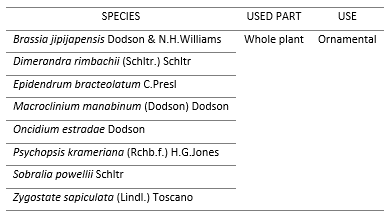
Table 5 - Main attractions of useful plants popularly called palms for the development of an ecotourism route in Jipijapa, Manabí, Ecuador
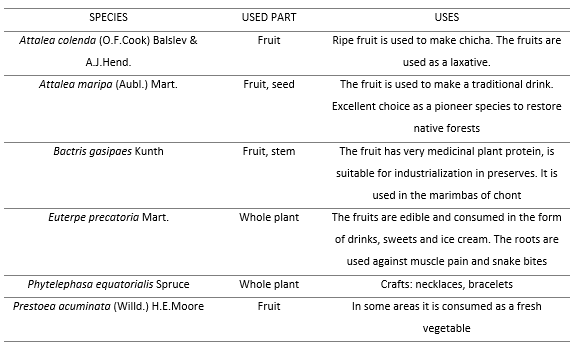
Table 6 - Main attractions of useful plants popularly called guayacanes for the development of an ecotourism route in Jipijapa, Manabí, Ecuador
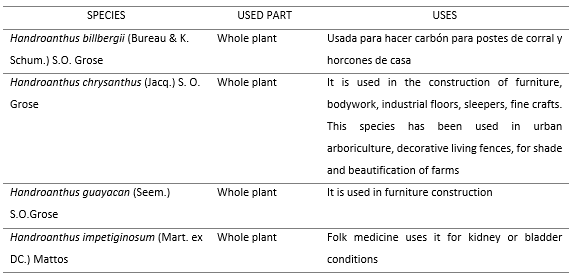
Table 7 - Main attractions of useful plants popularly called ceibos for the development of an ecotourism route in Jipijapa, Manabí, Ecuador

On the above basis, it can be said that plant-based tourism is an integrated form of tourism that includes elements of food tourism, health and wellness tourism, tea tourism, heritage tourism, educational tourism, ecotourism and agrotourism. In Jipijapa, a tourist can learn about medicinal, ornamental, food, wood and craft plant species. On the different agroforestry farms, they can be taught about their planting and harvesting (educational tourism, rural tourism or ecotourism), and in the case of food and medicinal plants, about their nutritional and therapeutic properties (gastronomic tourism, health and wellness tourism).
According to the results obtained, useful plant tourism is defined as an integrated type of tourism that involves outdoor activities, including festivals, workshops on plants used by the population, tourist parks, agroforestry farms and the natural habitats of the plants that allow the popularization of the properties of the plants and the preservation of traditional knowledge. As a tourist resource there are the tropical dry forest and the agroforestry systems; as a tourist attraction there are the different species of flora that were identified.
The tour guide should be aware of the traditional uses of the plants and explain how to use them. For example, in the case of medicinal and edible plants he will explain how to make an aromatic drink, commonly prepared by pouring hot or boiling water over dry leaves, such as tea (tea tourism, heritage tourism) or a wild fruit drink (gastronomic tourism).
Considering the above results, it is important to consider three (3) strategies to promote useful plant tourism in Jipijapa, which leads to the creation of new products or services, the management of new job profiles and the development of marketing, according to Hjalager, (2002); Hjalager, (2010) and Torabi Farsani et al., (2018).
Strategies to promote useful plant tourism in Jipijapa, adapted from Hjalager, (2002); Hjalager, (2010) and Torabi Farsani et al., (2018).
a) Innovation consists of new products or services, developed for the commercialization stage.
Celebration of traditional festivals and regional fairs of useful plants on the guayacán, ceibo, laurel, pechiche and balsa in the rural parishes of the canton Jipijapa.
Provide souvenirs or local products of useful plants throughout the canton Jipijapa.
Provide leaflets, brochures and maps with the useful plants.
Serve edible and medicinal plants, such as tea, fruit and drinks in restaurants, bars, hotels, among other tourist establishments.
Establishment of museums of plants and manuscripts of their traditional uses in rural areas and territories that are destinations for gastronomic, cultural, rural and medicinal tourism.
Organizing visits to shops where useful plants are sold, nurseries and agroforestry and tourist farms.
b) Innovation in management involves new work profiles, collaborative structures and authority systems.
Creation of services and facilities for the establishment of baths with aromatic medicinal plants.
Designing a brand or logo to promote tourism of useful plants.
Establishment of a shop of useful plants in sites such as parks and target villages for rural and cultural tourism, etc.
Encouraging tourists and hosts to participate in workshops on rescuing traditions from the uses of plants.
Organization of educational tours on useful plants.
Establishing a tea house to serve native plant infusions in the villages that are destinations for nature tourism.
c) Logistics innovation involves the development of internet marketing.
Presenting tourist destinations with useful plants and supplying products as virtual tours through websites or online stores.
Promoting electronic marketing based on useful plants.
Several integration strategies can be implemented in Jipijapa, which are classified into three categories: educational activities, preparation of tourism infrastructure and promotion of tourism marketing, adapted from the criteria of Torabi Farsani et al., (2018). Most of the residents interviewed and experts from the tourism sector emphasized as key components in useful plant based tourism: outdoor activities and workshops in parks, agroforestry farms, or in natural habitats (protected areas); training guides who are familiar with botany and useful plants, and integrating knowledge about traditional plant use and tourism, for the popularization of the nutritional and therapeutic properties of plants.
Strategies for integrating tourism and useful plants for education and knowledge transfer, adapted from Torabi Farsani et al., (2018):
a) Educational activities
Training guides for those who are familiar with botany and useful plants in rural parishes and the cantonal capital of Jipijapa
Ethnobotanical workshops for tourists visiting Julcuy, Pedro Pablo Gómez, Membrillal and El Anegado.
Organization of outdoor activities and workshops on useful plants in tourist parks, agroforestry farms, or in natural plant habitats.
Integration of the rescues of the traditional use of plants and tourism, for the popularization of the food, therapeutic, handmade and wood properties of the plants.
Exhibitions of books, magazines, brochures and manuscripts of useful plants in local museums and educational institutions.
b) Preparing tourist infrastructure
Integrating useful plant research centres with tourism.
Identifying useful plant trails in each parish
Establishing ethnobotanical museums.
Opening an herbarium of useful plants to the public.
c) Promoting tourism marketing
Developing educational tourism marketing with emphasis on useful plants.
Providing brochures, maps and albums of plants, including medicinal, ornamental, craft, timber and food plants to educate tourists.
The specific findings in this research show that age is a factor influencing knowledge of useful plants, with older respondents having the most knowledge about plants. This could be interpreted as practical knowledge acquired over the years.
It is shown that gender plays an important role in practical knowledge. The results show that knowledge of useful plants is independent of the education level of the respondent. Therefore, formal education is not an important factor influencing the state of ethnobotanical knowledge in Jipijapa, Ecuador.
Seventy-six species of major interest to tourism are proposed to be promoted as a tourist attraction through useful plant tourism, as an integrated type of tourism involving outdoor activities, including festivals, workshops on plants used by the population, stays in tourist parks, agroforestry farms and the natural habitats of plants, to popularize the properties of plants and preserve the traditional knowledge and biological diversity of a country; Of these, 57 are threatened with extinction and the popularly known orchids (8 species), palms (6), guaiacs (3) and kapok trees (2).
Referencias bibliográficas
ALEXIADES, M.N., 1996. Selected guidelines for ethnobotanical research: a field manual. New York Botanical Garden, New York. ISBN: 978-0893274047. Disponible en: https://books.google.com.cu/books/about/Selected_Guidelines_for_Ethnobotanical_R.html?id=EtsOAQAAMAAJ&redir_esc=y [ Links ]
ANGULO, C.A.F., ROSERO R., R.A. y GONZÁLEZ INSUASTI, M.S., 2012. Estudio etnobotánico de las plantas medicinales utilizadas por los habitantes del corregimiento de Genoy, Municipio de Pasto, Colombia. Universidad y Salud [en línea], vol. 14, no. 2, pp. 168-185. [Consulta: 24/04/2019]. ISSN: 0124-7107. Disponible en: Disponible en: http://www.scielo.org.co/scielo.php?script=sci_abstract&pid=S0124-71072012000200007&lng=en&nrm=iso&tlng=es . [ Links ]
CHENG, S., HU, J., FOX, D. y ZHANG, Y., 2012. Tea tourism development in Xinyang, China: Stakeholders' view. Tourism Management Perspectives [en línea], vol. 2-3, pp. 28-34. [Consulta: 24/04/2019]. ISSN: 2211-9736. DOI 10.1016/j.tmp.2011.12.001. Disponible en: Disponible en: http://www.sciencedirect.com/science/article/pii/S2211973611000043 . [ Links ]
CUESTA, F., PERALVO, M., BAQUERO, F.D., BUSTAMANTE, M., MERINO, A., MURIEL, P., FREILE, J., TORRES-CARVAJAL, O. y DE, T., 2013. IDENTIFICACIÓN DE VACÍOS Y PRIORIDADES DE CONSERVACIÓN EN EL ECUADOR CONTINENTAL [en línea]. Ecuador: Ministerio del Ambiente del Ecuador, Dirección Nacional de Biodiversidad (DNB) GIZ Programa GESOREN. Disponible en: https://www.researchgate.net/publication/266146873_IDENTIFICACION_DE_VACIOS_Y_PRIORIDADES_DE_CONSERVACION_EN_EL_ECUADOR_CONTINENTAL. [ Links ]
GHIRARDINI, M., et al., 2007. The importance of a taste. A comparative study on wild food plant consumption in twenty-one local communities in Italy. Journal of Ethnobiology end Ethnomedicine. 3 (22): 1-14. DOI: 10.1186/1746-4269-3-22 Disponible en: https://www.ncbi.nlm.nih.gov/pubmed/17480214 [ Links ]
HJALAGER, A. M., 2002. Repairing innovation defectiveness in tourism. Tourism Management [en línea], vol. 23, no. 5, pp. 465-474. [Consulta: 24/04/2019]. ISSN: 0261-5177. DOI 10.1016/S0261-5177(02)00013-4. Disponible en: Disponible en: http://www.sciencedirect.com/science/article/pii/S0261517702000134 . [ Links ]
HJALAGER, A. M., 2010. A review of innovation research in tourism. Tourism Management [en línea], vol. 31, no. 1, pp. 1-12. [Consulta: 24/04/2019]. ISSN: 0261-5177. DOI 10.1016/j.tourman.2009.08.012. Disponible en: Disponible en: http://www.sciencedirect.com/science/article/pii/S0261517709001691 . [ Links ]
JOLLIFFE, L., 2007. Tea and tourism: tourists, traditions and transformations [en línea]. Reino Unido: Clevedon: Channel View Publications. [Consulta: 24/04/2019]. ISBN 978-1-84541-056-8. Disponible en: Disponible en: https://dialnet.unirioja.es/servlet/libro?codigo=500788 . [ Links ]
JOSSE, C., NAVARRO, P., COMER, R., EVANS, D., FABER-LANGENDOEN, M., FELLOWS, G., KITTEL, S., MENARD, M., PYNE, M., REID, K. y SCHULD, K., 2003. Ecological Systems of Latin America and the Caribbean: A Working Classification of Terrestrial Systems. NatureServe, Arlington, VA [en línea], [Consulta: 24/04/2019]. Disponible en: Disponible en: http://www.natureserve.org/es/node/102 . [ Links ]
KALA, C. P., 2015. Medicinal and aromatic plants: Boon for enterprise development. Journal of Applied Research on Medicinal and Aromatic Plants, 2(4), 134-139. Disponible: https://www.sciencedirect.com/science/article/pii/S2214786115300036 [ Links ]
QUIJANO, J.G.C., 2018. Uso y conocimiento de Bauhinia monandra Kurz en una zona urbana de Quintana Roo. ETNOBIOLOGÍA [en línea], vol. 16, no. 2, pp. 48-57. [Consulta: 22/03/2019]. ISSN: 1665-2703. Disponible en: Disponible en: http://asociacionetnobiologica.org.mx/revista/index.php/etno/article/view/239 . [ Links ]
QUINLAN, M.B. y QUINLAN, R.J., 2007. Modernization and medicinal plant knowledge in a Caribbean horticultural village. Medical Anthropology Quarterly [en línea], vol. 21, no. 2, pp. 169-192. ISSN: 0745-5194. Disponible en: https://www.ncbi.nlm.nih.gov/pubmed/17601083. [ Links ]
MARTÍN, G.J., 1995. Ethnobotany: A methods manual. Chapman & Hall, London. 268pp. ISBN: 041248370X [ Links ]
SÁENZ, M. y ONOFA, Á., 2005. Reporte de los ecosistemas terrestres ecuatoriano. Indicadores de biodiversidad para su uso nacional. Quito, Ecuador: Ministerio del Ambiente del Ecuador y Ecociencia. Disponible en: https://www.springer.com/gp/book/9780412483707 [ Links ]
ROSETE BLANDARIZ, et al., 2019. Fitorecursos de interés para el turismo en los bosques secos de la región costa, Jipijapa, Manabí, Ecuador. Revista Cubana de Ciencias Forestales. 14(2): 240-262, ISSN: 1996-2452 RNPS: 2148. Disponible en: http://cfores.upr.edu.cu/index.php/cfores/article/view/435/html [ Links ]
SIERRA, M., 1999. Propuesta preliminar de un sistema de clasificación de vegetación para el Ecuador continental. Quito, Ecuador: Proyecto INEFAN/GEF-BIRF y EcoCiencia. ISBN: 978-9978-40-943-5. Disponible en: https://www.worldcat.org/title/propuesta-preliminar-de-un-sistema-de-clasificacion-de-vegetacion-para-el-ecuador-continental/oclc/43615903 [ Links ]
TORABI FARSANI, N., ZEINALI, H. y MOAIEDNIA, M., 2018. Food heritage and promoting herbal medicine-based niche tourism in Isfahan, Iran. Journal of Heritage Tourism [en línea], vol. 13, no. 1, pp. 77-87. [Consulta: 20/03/2019]. ISSN: 1743-873X. DOI 10.1080/1743873X.2016.1263307. Disponible en: Disponible en: https://doi.org/10.1080/1743873X.2016.1263307 . [ Links ]
UPRETY, Y., ASSELIN, H., BERGERON, Y., DOYON, F. y BOUCHER, J.-F., 2012. Contribution of traditional knowledge to ecological restoration: Practices and applications. Écoscience [en línea], vol. 19, no. 3, pp. 225-237. [Consulta: 22/04/2019]. ISSN: 1195-6860. DOI 10.2980/19-3-3530. Disponible en: Disponible en: https://doi.org/10.2980/19-3-3530 . [ Links ]
VALENCIA VÉLEZ, S. 2016. Nuestro patrimonio biocultural. En García Alvarado, K. Resúmenes I Encuentro Nacional de Etnobiología. Riobamba, Ecuador, 08/04/2016. Centro Cipacuna. Disponible en: http://cipacunapatrimonio.wix.com/cipacunapatrimonio [ Links ]
ZENT, S., 2001. Acculturation and ethnobotanical knowledge loss among the Piaroa of Venezuela: Demonstration of a quantitative method for the empirical study of traditional ecological knowledge change. En: MAFFI, L. (ed.), On biocultural diversity: linking language, knowledge, and the environment [en línea]. London, Washington, [D.C.]: Smithsonian Institution Press, ISBN: 978-1-56098-905-9. Disponible en: https://kent.rl.talis.com/items/9BA6AC42-B236-2697-08AC-B625FF8DA115.html. [ Links ]
Received: April 18, 2019; Accepted: October 18, 2019











 text in
text in 


